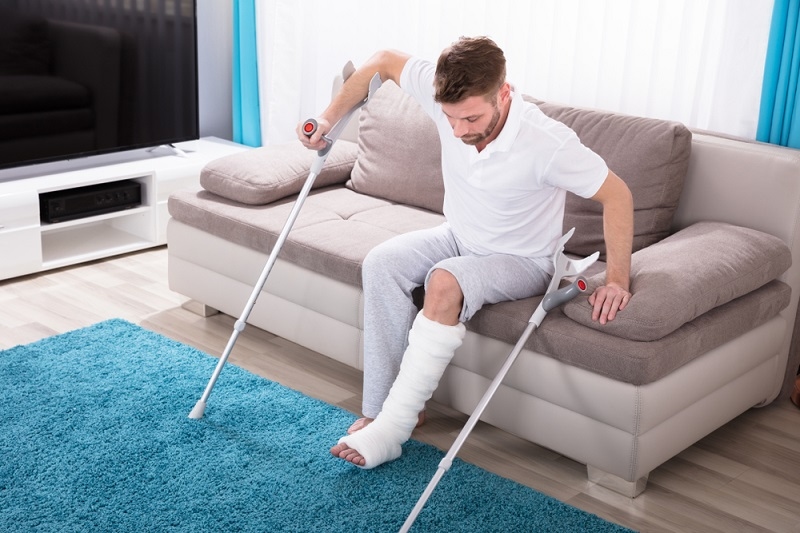Rebuilding Strength After a Fracture: Rehabilitate Correctly

Fractures can be painful and debilitating, impacting mobility and quality of life. However, with the right rehabilitation strategies, individuals can rebuild strength, regain mobility, and restore function after a fracture. Rehabilitation plays a crucial role in the healing process, promoting proper bone alignment, preventing complications, and facilitating a successful recovery. In this article, we will explore effective rehabilitation strategies for fracture recovery.
Understanding Fracture Recovery
Fractures are common injuries that can significantly impact a person's daily life. This section delves into the process of fracture recovery, providing a comprehensive understanding of what happens when a bone is broken. It explains the stages of bone healing, including inflammation, soft callus formation, hard callus formation, and remodeling. Understanding these stages helps individuals comprehend the timeline of their recovery and sets realistic expectations for the rehabilitation process.
Factors Affecting Fracture Recovery
Several factors can influence fracture recovery and the time it takes to regain strength and mobility. This section discusses factors such as age, the type and location of the fracture, overall health, and lifestyle habits. It emphasizes the importance of considering these factors when developing a rehabilitation plan, as they can impact the speed and quality of recovery. Additionally, it provides guidance on how to mitigate negative factors and optimize the healing process.
Nutrition for Fracture Recovery

Proper nutrition is vital for bone healing and overall recovery. This section focuses on the essential nutrients that support fracture healing, including calcium, vitamin D, protein, and other key vitamins and minerals. It provides dietary recommendations and suggests foods that are rich in these nutrients. Additionally, it discusses the role of hydration, antioxidants, and anti-inflammatory foods in promoting healing and reducing complications. By optimizing nutrition, individuals can provide their bodies with the necessary building blocks for a successful recovery.
Psychological Support and Coping Strategies
Fracture recovery can be physically and emotionally challenging. This section addresses the psychological aspects of rehabilitation and offers coping strategies for managing stress, anxiety, and frustration during the recovery process. It emphasizes the importance of maintaining a positive mindset, seeking support from loved ones, and engaging in activities that promote mental well-being. It also highlights the role of healthcare professionals, such as psychologists and counselors, in providing additional support when needed.
Fracture Recovery and Rehabilitation

Physical therapy plays a critical role in fracture recovery. This section explores various rehabilitation techniques and exercises that can help rebuild strength and restore functionality. It covers range-of-motion exercises, strength training, balance and coordination exercises, and functional training. It also highlights the importance of progressive loading, proper technique, and regular assessment to ensure safe and effective rehabilitation. Find practical tips and guidance on incorporating these exercises into their daily routines.
Early Immobilization and Protection
Following a fracture, early immobilization and protection of the injured area are essential. This may involve the use of casts, splints, or braces to stabilize the bone and promote proper healing. Compliance with immobilization instructions is crucial to prevent further damage and allow for optimal recovery.
Pain Management
Fractures can cause significant pain, which can hinder rehabilitation progress. Effective pain management strategies, including medication, physical modalities (such as ice or heat therapy), and relaxation techniques, can help alleviate pain and facilitate engagement in rehabilitation activities.
Range of Motion Exercises
Range of motion exercises is important for maintaining joint mobility and preventing stiffness during the healing process. Physical therapists can guide individuals through gentle, controlled exercises that gradually increase joint movement while protecting the healing fracture site.
Strengthening Exercises
As the healing progresses, targeted strengthening exercises help rebuild muscle strength and improve overall function. These exercises focus on the muscles surrounding the fracture site, as well as the adjacent joints, to provide stability and support.
Weight-Bearing Activities
Depending on the type and location of the fracture, weight-bearing activities may be gradually reintroduced. This helps stimulate bone remodeling and improve bone density. The progression of weight-bearing activities should be supervised and guided by a healthcare professional to ensure safety.
Balance and Coordination Training
Fractures can affect balance and coordination. Rehabilitation programs often incorporate specific exercises and activities to improve balance, stability, and coordination. These exercises may involve standing on one leg, performing balance challenges, or using specialized equipment.
Physical Therapy
Working with a physical therapist is an integral part of fracture rehabilitation. Physical therapists create personalized treatment plans tailored to individual needs, focusing on pain management, restoring range of motion, improving strength and function, and facilitating a safe return to daily activities.
Learn more: Experience the Power of Physical Therapy
Occupational Therapy
Fracture recovery may involve occupational therapy to address functional limitations and facilitate a successful return to activities of daily living. Occupational therapists assess and provide strategies for tasks such as dressing, bathing, cooking, and work-related activities.
Assistive Devices and Adaptive Equipment
During fracture recovery, assistive devices and adaptive equipment may be recommended to support mobility and independence. Crutches, walkers, or canes can aid in weight-bearing, while adaptive equipment such as reachers or dressing aids can assist with daily tasks.
Nutrition and Bone Health
A balanced diet rich in essential nutrients is vital for fracture recovery. Adequate intake of calcium, vitamin D, protein, and other nutrients supports bone healing and strength. Consulting a healthcare professional or registered dietitian can ensure proper nutritional support during the recovery process.
Gradual Return to Physical Activity
As healing progresses, a gradual return to physical activity and sports may be recommended. This should be done under the guidance of healthcare professionals to ensure appropriate progression, minimize the risk of re-injury, and support long-term bone health.
Conclusion
Rebuilding strength and regaining mobility after a fracture requires a comprehensive rehabilitation approach. Effective rehabilitation strategies, including early immobilization, pain management, exercises, therapy, and lifestyle modifications, can promote proper healing, restore function, and enhance overall well-being. Collaboration with healthcare professionals, including physical and occupational therapists, is crucial in developing personalized rehabilitation plans tailored to individual needs. By following these strategies, individuals can optimize their fracture recovery journey and regain strength and mobility to resume a fulfilling and active life.
This content was created by AI
